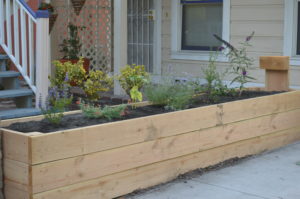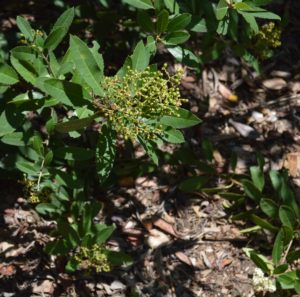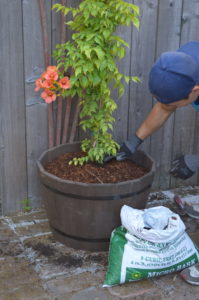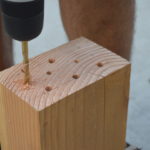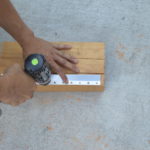Creating a Native Bee Habitat
Native bees are the most important group of pollinators we have, and with their habitat dwindling, now is a more important time than ever for us to lend a helping hand. Most native bees nest in the ground but increasing land development is severely limiting their nesting areas. Other species of native bees nest in beetle tunnels in old wood, but as wildlands disappear, these nesting spaces too are disappearing. Fewer nests mean fewer bees, which means reduced biodiversity and productivity of our crops and ornamental plants pollinated by bees and other creatures.
However, you can make your garden attractive to native bees by providing them with pollen- and nectar-rich flowers to feed from and nesting opportunities that will invite them to settle in. They’ll return the favor by increasing the pollination rate in your garden, making it more bountiful and beautiful.
To provide forage for native bees, choose flowers of different colors, shapes, and blooming periods so there will be something in bloom throughout the year. Planting in clumps as large as 4’ or more will attract more bees than planting in small, scattered bunches.
There are many flowering plants that can provide food for native bees, and research has shown they are four times more likely to be drawn to native plants. Select a variety from the following list of plants to grow in your yard, many of which area California natives:
- California redbud (Cercis)
- Toyon (Heteromeles)
- Western dogwood (Cornus)
- Willow (Salix)
Shrubs
- Button bush (Cephalanthus)
- Butterfly bush (Budleja)
- California Fuschia (ZAuschneria)
- California yerba santa (Eriodictyon)
- Chamise (Adenostoma)
- Mule’s fat (Baccharis)
- Ocean spray (Holodiscus)
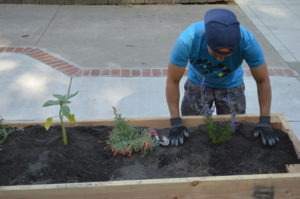
- Whiteleaf manzanita (Arctostaphylos)
- Wild lilac (Ceanothus)
- Wisteria (Wisteria)
- Woolly blue curls (Trichostema)
Vines
- Wild rose (Rosa)
- Trumpet vine (Campsis radicans)
- Catmint (Nepeta)
- Common deerweed (Lotus)
- Coneflower (Echinacea)
- Heather (Erica Atropurpurea)
- Horkelia (Horkelia)
- Ithurieal’s spear (Triteleia)
- Lavender (Lavandula)
- Lupine (Lupinus)
- Mint (Stachys)
- Red hot poker (kniphofia)
- Sage (Salvia)
Annuals
- California poppy (Eschscholzia)
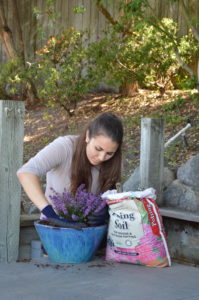
- Hayfield tarweed (Hemizonia)
- Phacelia (Phacelia)
- Rod wirelettuce (Stephanomeria)
- Sunflower (Helianthus)
- Western rosinweed (Calycadenia)
More native plants can be found on the UC Davis Arboretum All Stars database.
Materials List
- Variety of native plants from the list below
- Block of untreated wood (4” × 6” × 12”)
- Power drill with ¼” and 5/16” drill bits
- Hardware to mount the block on a fence or wall
To make a native bee nesting box:
- Drill Nesting Holes: Drills holes approximately 5” deep into one side of the wood block, making alternating rows of different sizes using the two different size drill bits.
- Attach Hardware: To mount the nesting box, attach hardware from which to hang the box or drill a hole in the back of the box to hang it on a nail.
- Mount the Box: Attach the box securely on a fence or wall in a sunny location that’s sheltered from wind. Placing the box near flowers and trees will make it more inviting to the bees, and mounting it close to eye level will make it easier for you see that the bees are using the box.
To prepare space for ground-nesting bees:
- Clear Ground for Nesting: Choose an open spot in a sunny location and clear an area up to 2’ across so that the soil is exposed, free of vegetation, fast-draining, and lightly compacted. Clearing multiple areas of different sizes will draw different species of bees to nest.
- Prepare Sandpit for Nesting: Alternatively, you can dig a hole about 2’ deep and fill it with a mixture of fine horticultural sand and loam. You can also fill a container with the sand and loam mixture for bees to nest in.
To learn how to bring more pollinators to your garden, see Creating a Hummingbird Habitat and Create a Small Space Butterfly Garden.
